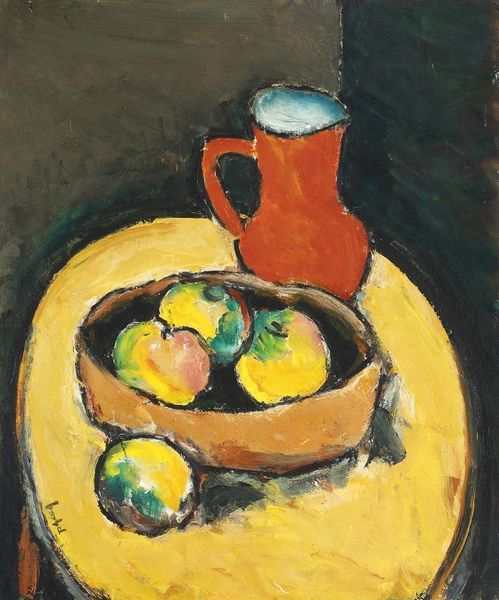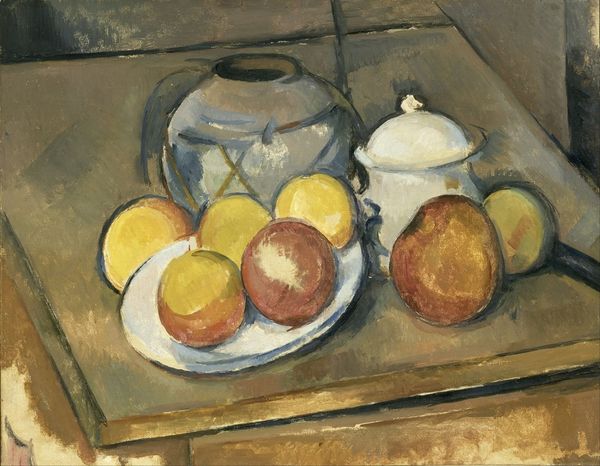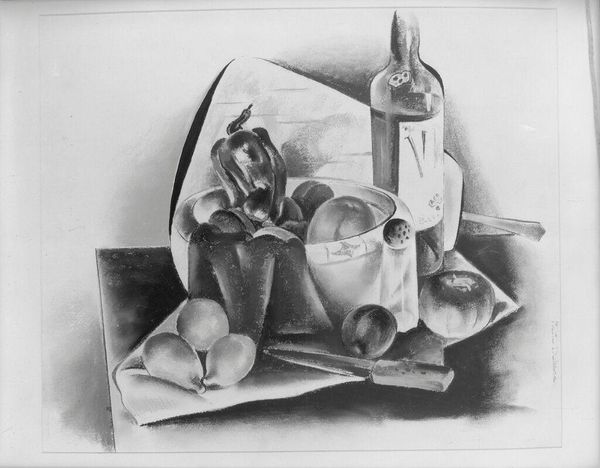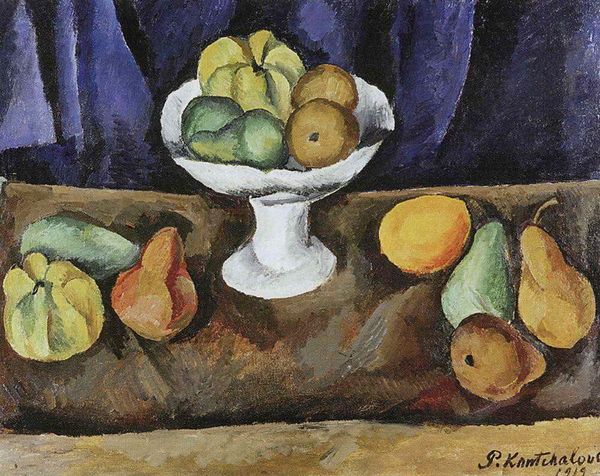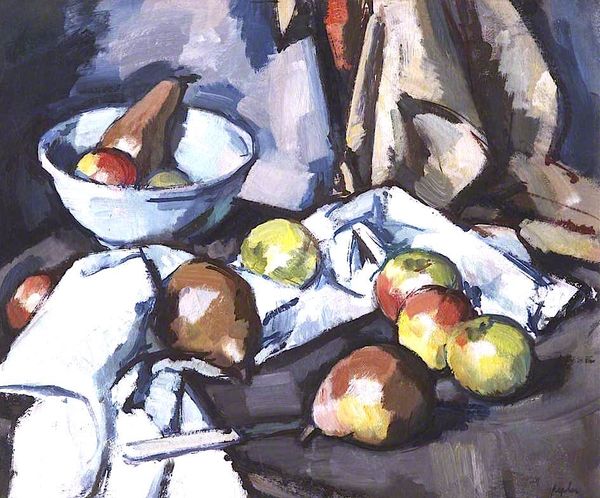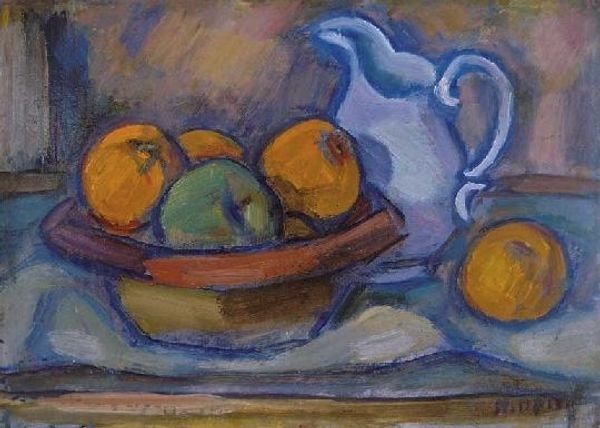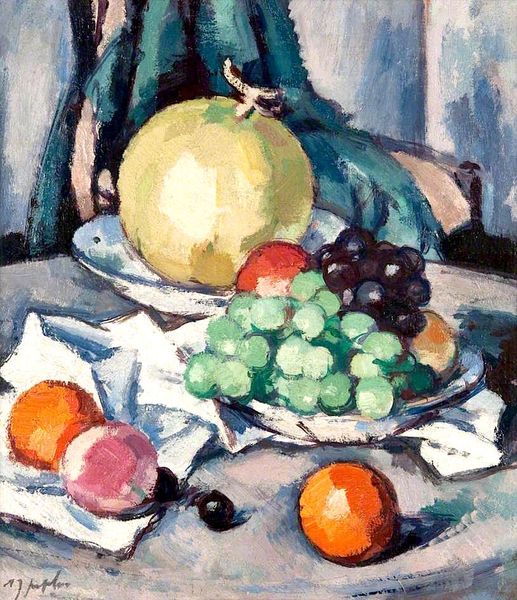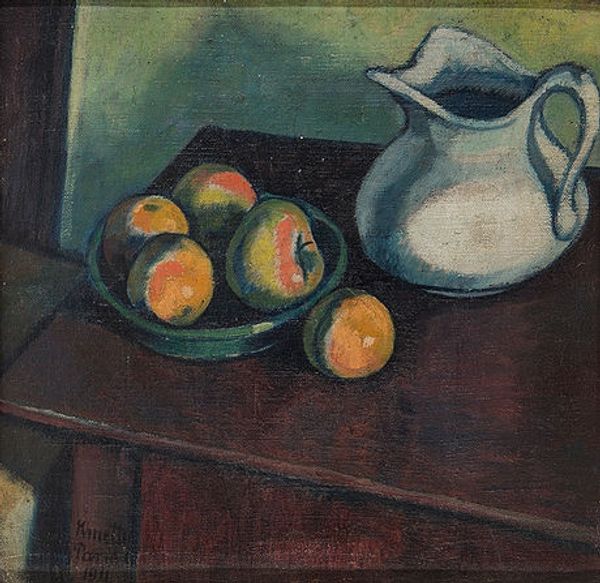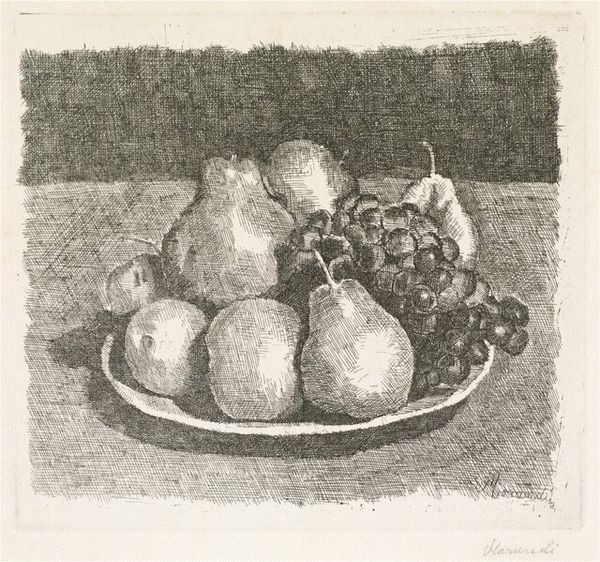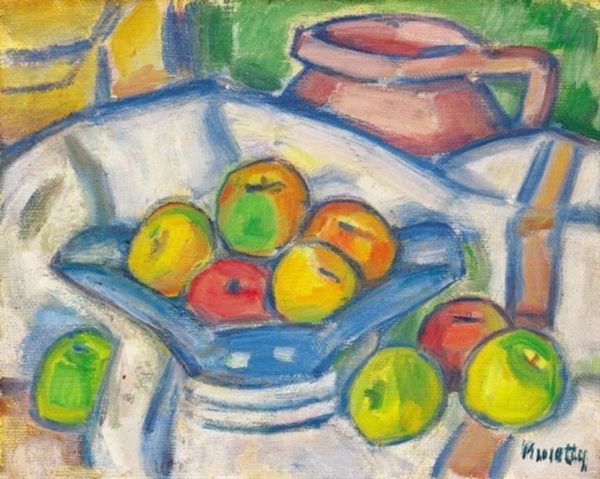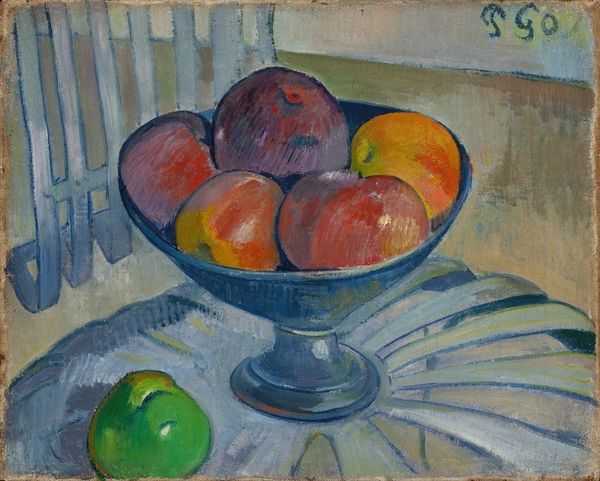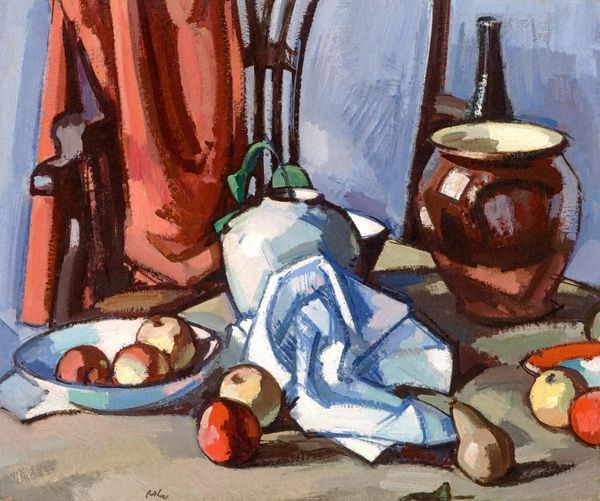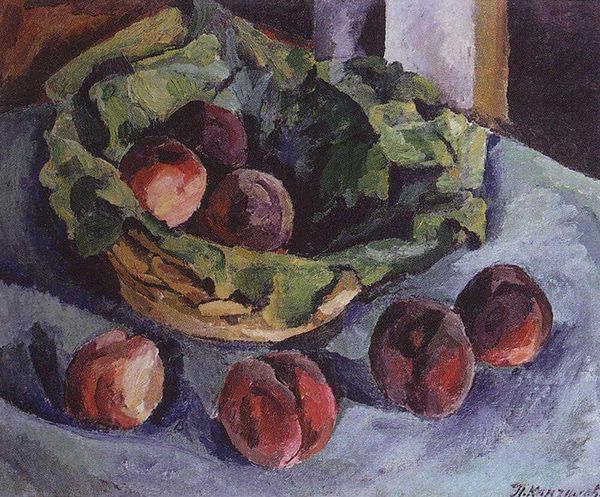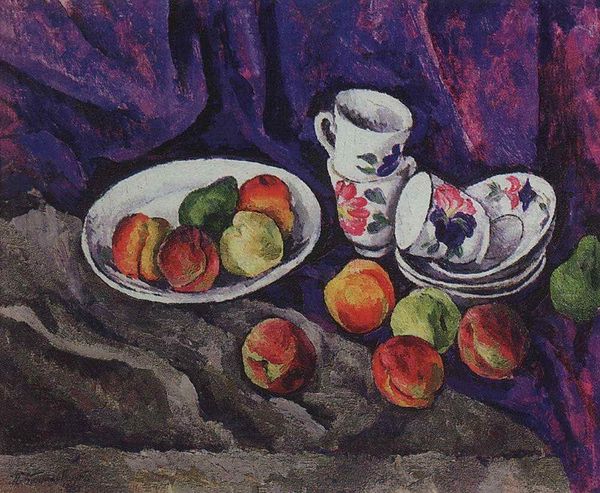
canvas
#
pencil drawn
#
facial expression drawing
#
pencil sketch
#
charcoal drawing
#
charcoal art
#
canvas
#
portrait reference
#
pencil drawing
#
limited contrast and shading
#
animal drawing portrait
#
portrait drawing
Dimensions: 54.5 cm (height) x 65.5 cm (width) (Netto)
Curator: A charcoal and pencil sketch on canvas entitled "The Peaches", made in 1914 by Othon Friesz. It currently resides at the SMK, the National Gallery of Denmark. Editor: My immediate reaction is that there is something unsettling in its static and monochrome rendition. The stark contrasts of the grey peaches make the painting dramatic yet bland. Curator: The drama likely stems from Friesz's transition into post-impressionism and his involvement in Fauvism, which heavily influenced many early 20th century painters through his choice of composition and emphasis. Editor: Can we then interpret the peaches as something other than a fruit? What might peaches symbolize in the social-political context of 1914? Are they mere representations of fleeting pleasures right before World War One, or could there be other elements, darker undertones implied here? Curator: Peaches often stand for abundance, good health, and sensuality. Friesz painted this piece right at the brink of World War One. Looking at it in the context of that looming devastation, that abundance seems almost tragically ironic. The arrangement, somewhat clumsy, almost aggressively simple, hints at societal unease beneath the surface of that still life, don't you think? Editor: Precisely! The peaches, symbols of opulence, rendered in such bleak tones, appear as relics—artifacts right before the destruction. This could speak to Friesz's commentary on society's fragile grasp on peace and wealth before the war engulfed them. Curator: That reading of the piece enriches the experience quite a bit. His use of charcoal, stark against the canvas, gives a raw, unrefined feeling to the image; emphasizing its immediacy, mirroring that tense historical moment perhaps. Editor: Yes, knowing it was composed at that tipping point, heightens the awareness and emotional weight in these images; offering more meaning for us to interpret nowadays, so many years later. Curator: Art continually echoes throughout time in ways we could never have guessed, resonating long after the artists cease to create. Editor: Leaving viewers, like ourselves, the honor and great responsibility to try and understand, if not make sense, of it all.
Comments
No comments
Be the first to comment and join the conversation on the ultimate creative platform.
